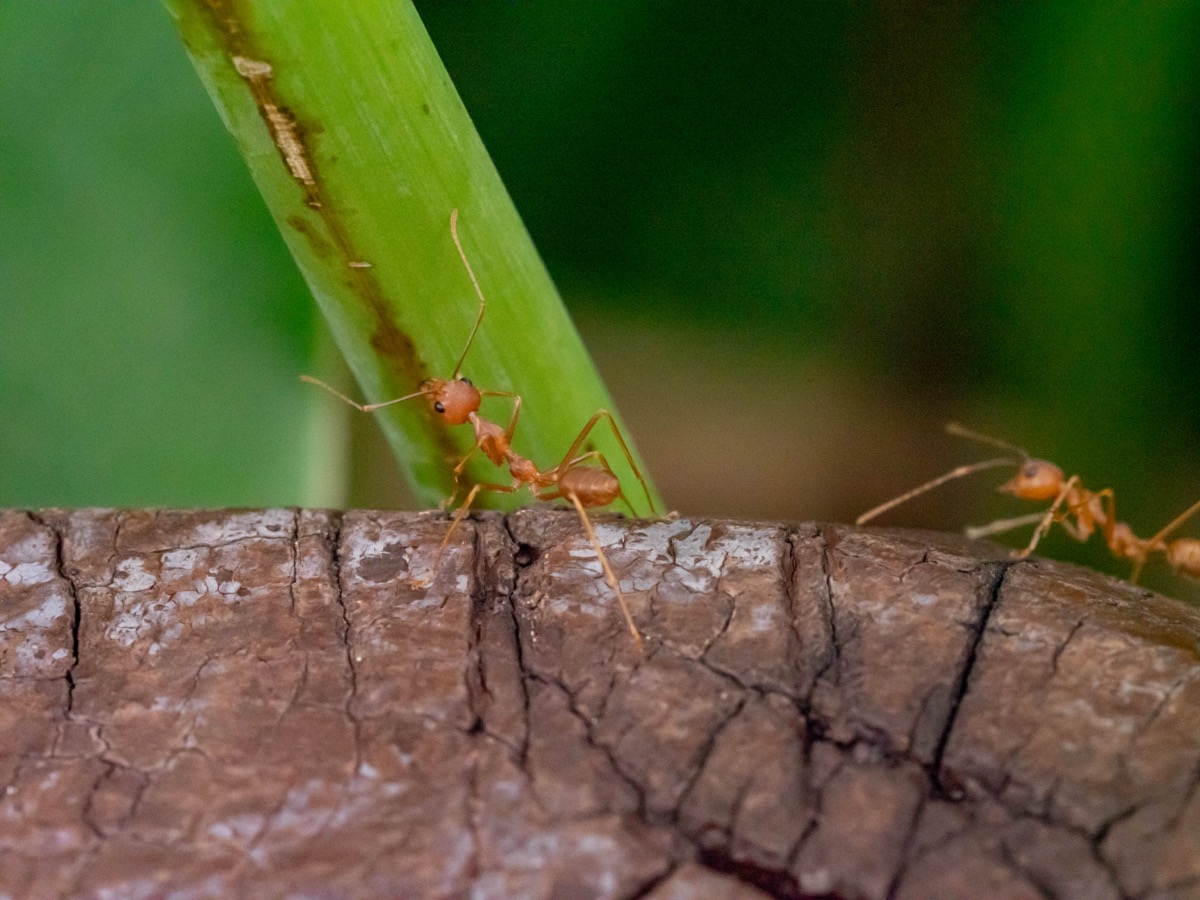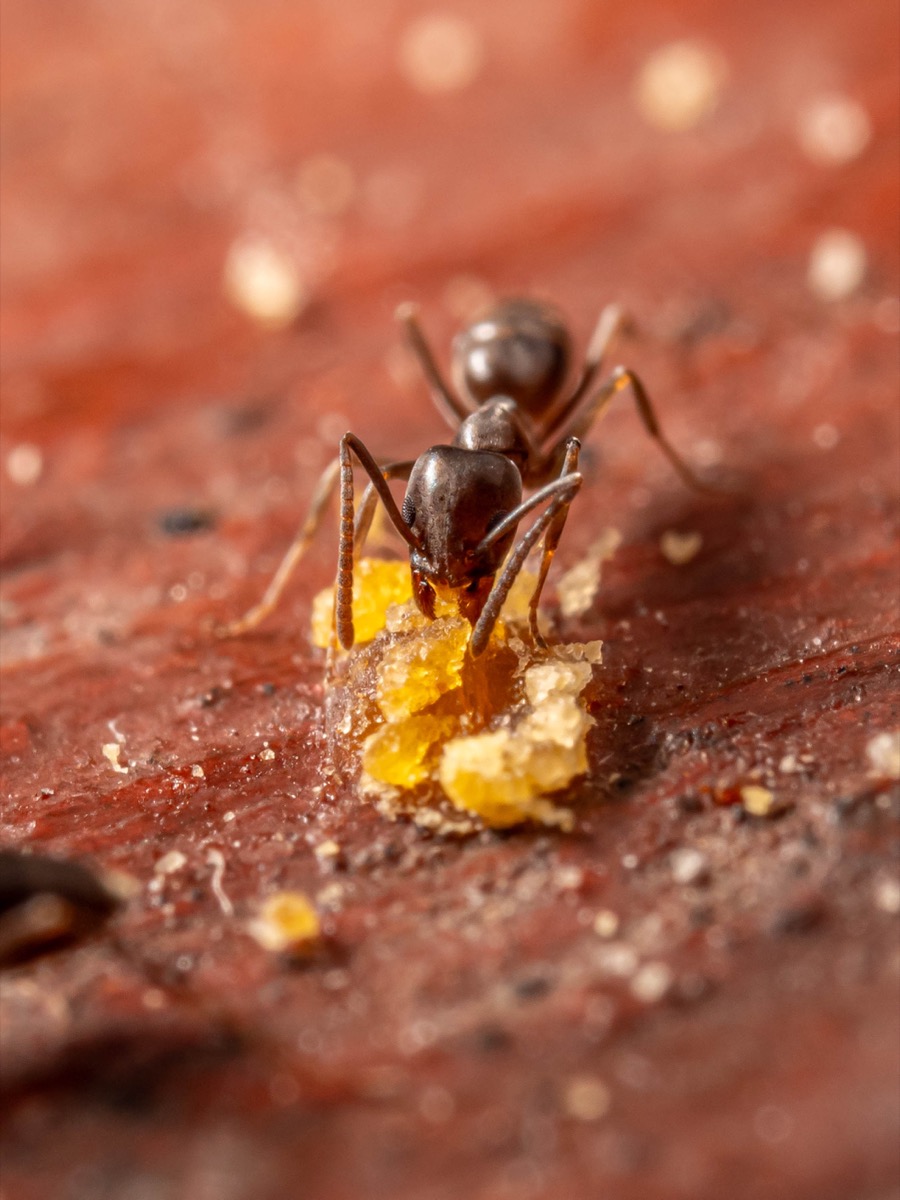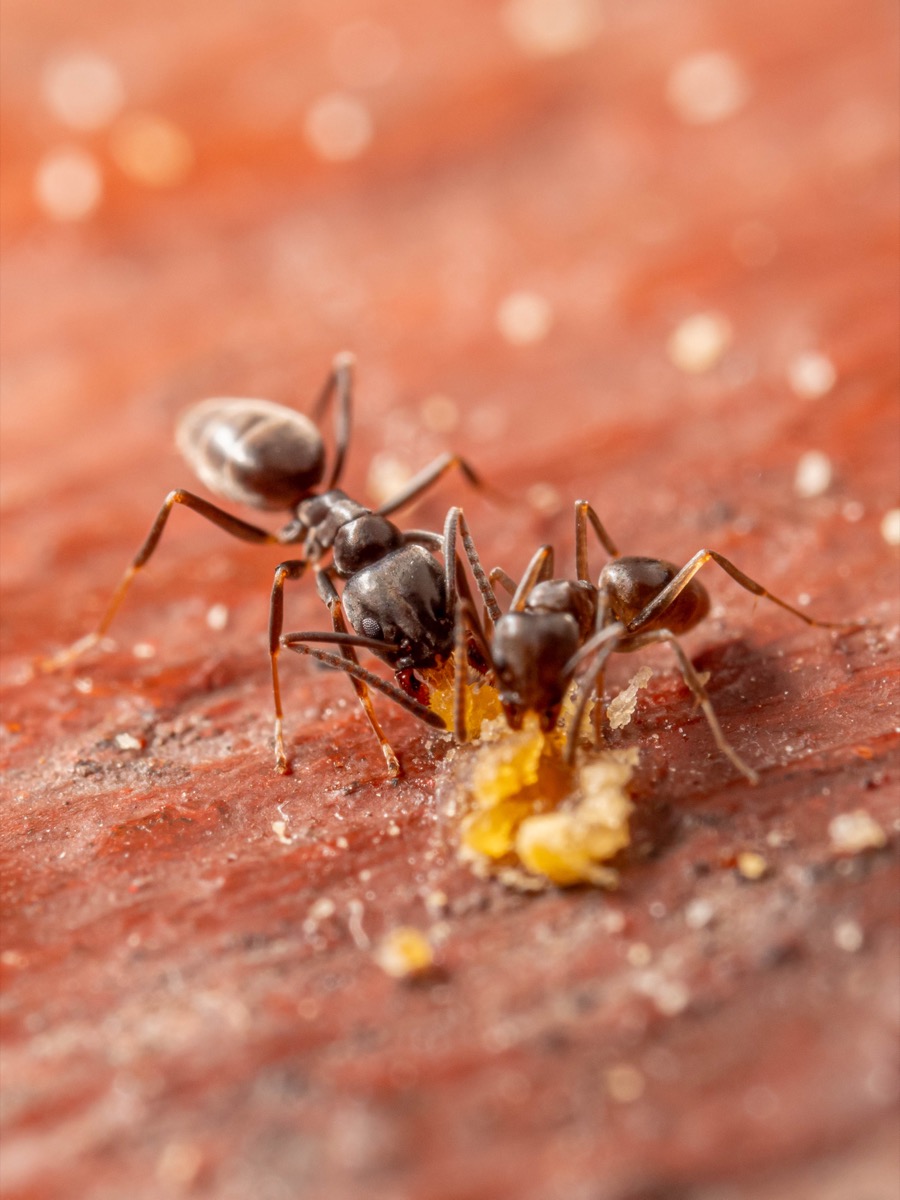General Characteristics
- Eusocial insects (colony life with role distribution)
- Body in three distinct parts: head, thorax, petiole (1 or 2 segments), gaster
- Elbowed antennae, strong mandibles
- Size varies (1 to 20 mm depending on species and caste)
Habitat
Ants colonize nearly all types of environments:
- Temperate and tropical forests
- Grasslands, heathlands, scrublands
- Arid or alpine zones
- Gardens, parks, buildings (synanthropic species)
Biology
- Colonies founded by one or more queens (claustral or dependent foundation)
- Remarkable longevity of queens, sometimes several decades
- Brood feeding by trophallaxis (food transfer)
- Communication through pheromones (alarm, trail marking, recognition…)
Feeding Behaviors
- Polyphagous: dead or living insects, nectar, honeydew, seeds, fungi…
- Some species tend aphids or scale insects to collect honeydew
- Others practice cleptobiosis (stealing food from other colonies)
Common Genera
- Formica – Large red forest ants, active and dominant
- Lasius – Small black or brown ants, very common
- Myrmica – Stinging ants, fond of humid habitats
- Camponotus – Large carpenter ants, often in dead wood
- Tetramorium, Solenopsis, Pheidole – Smaller genera, sometimes invasive
Distinctive Features
- Major role in trophic networks and soil functioning
- Complex interactions with numerous species (aphids, butterflies, fungi…)
- Great morphological and behavioral diversity across castes






